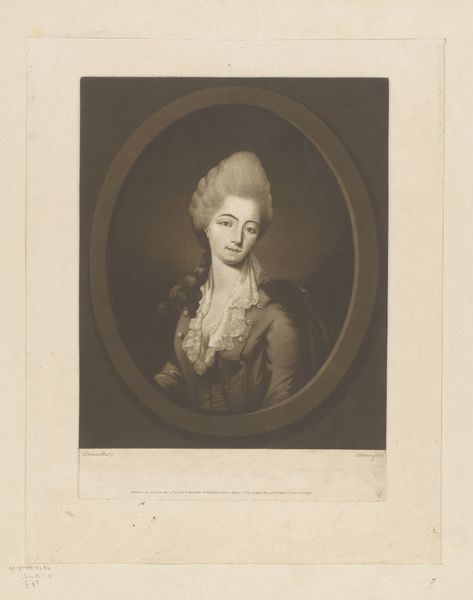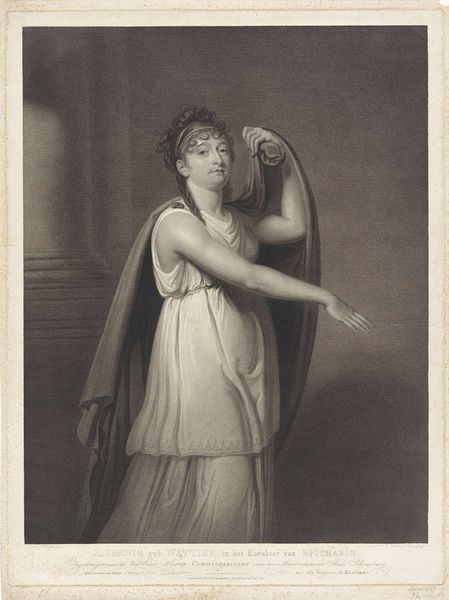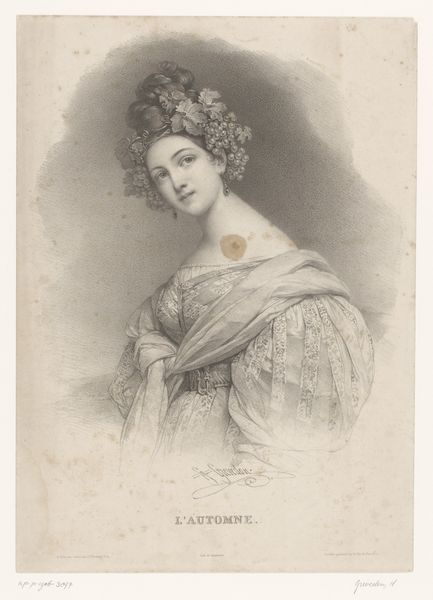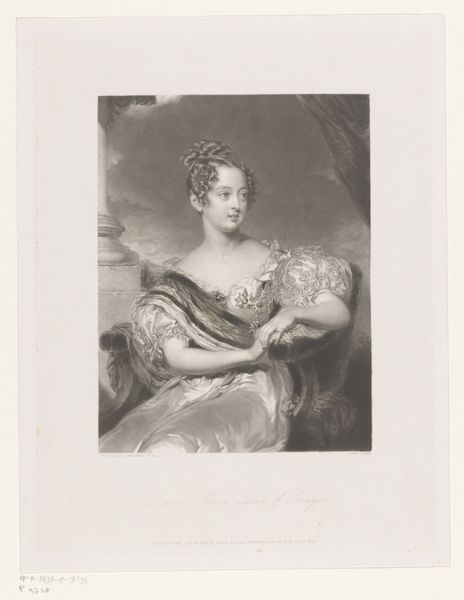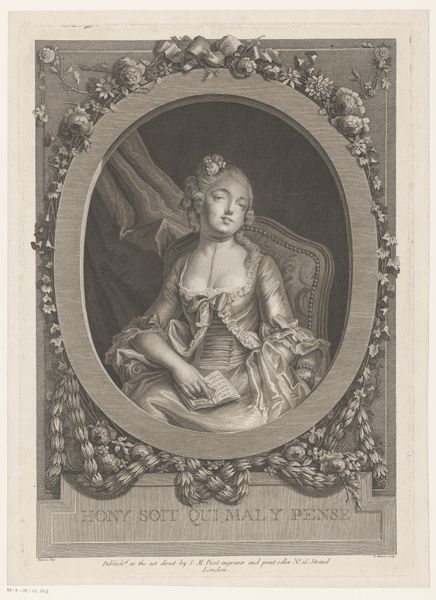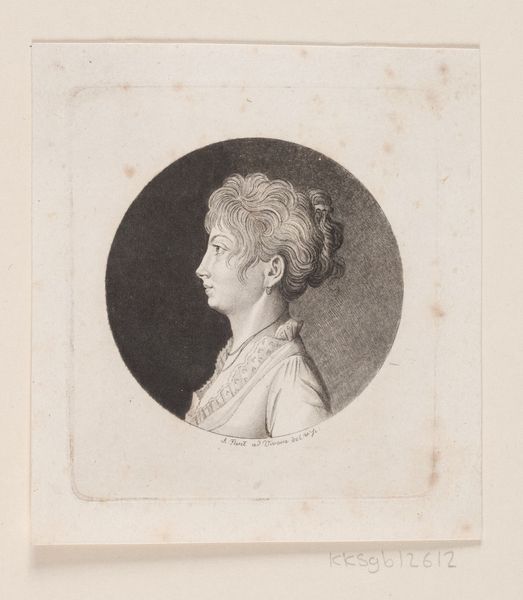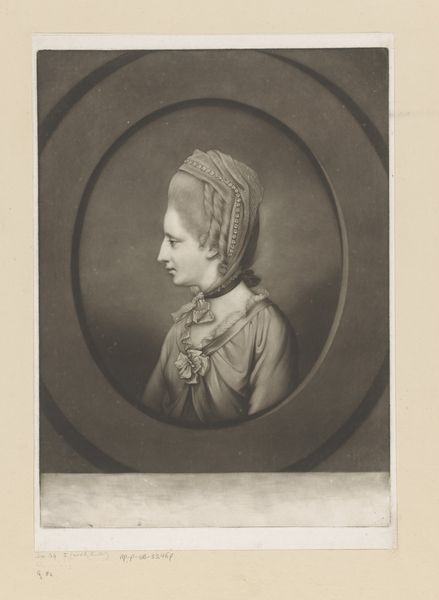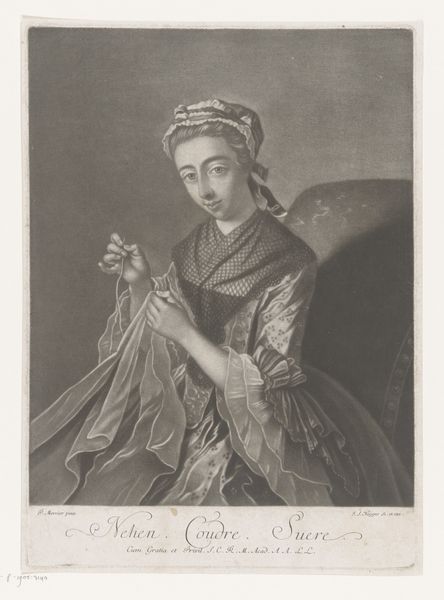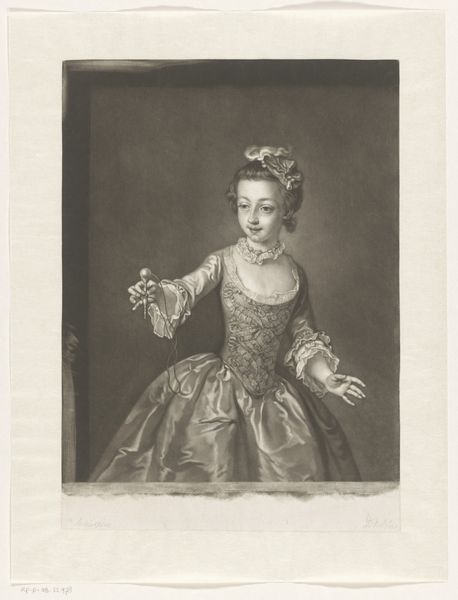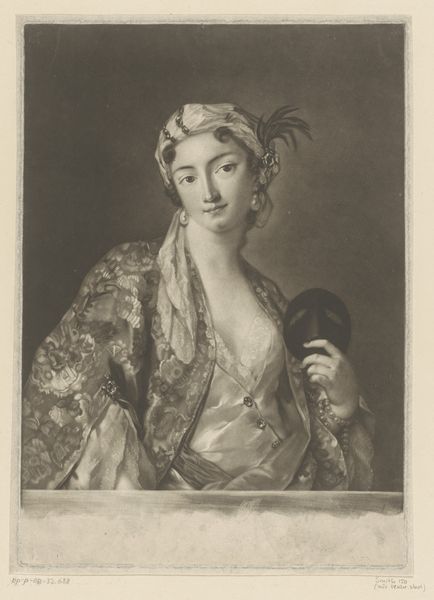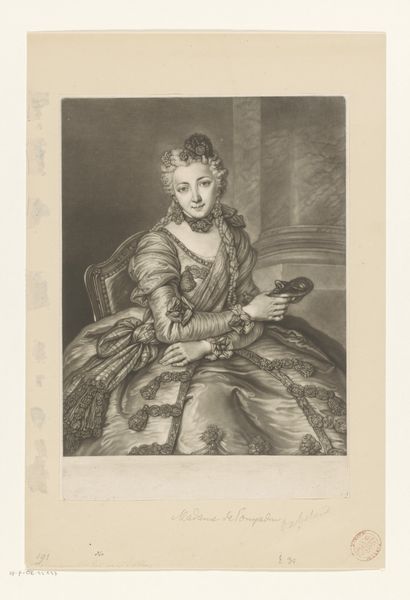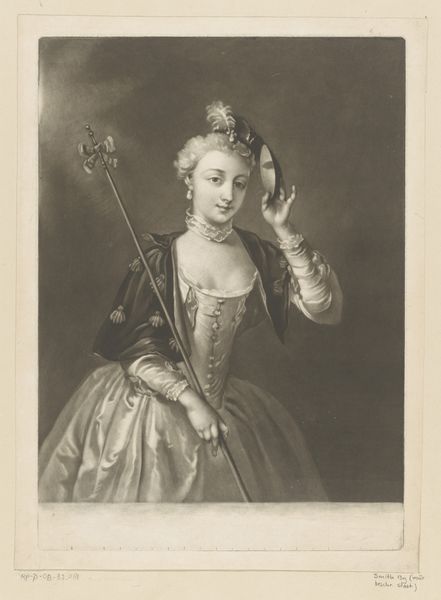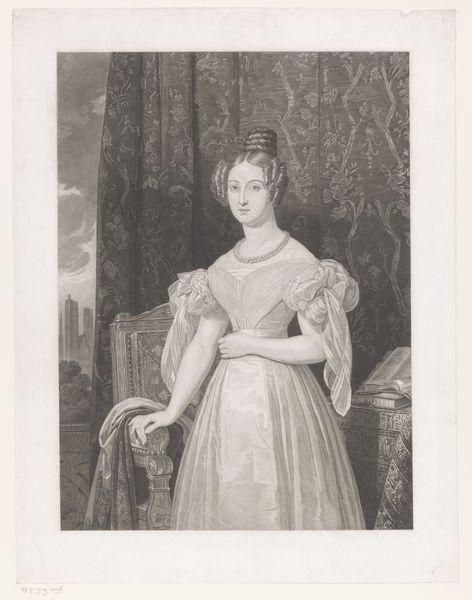
Dimensions: height 353 mm, width 250 mm
Copyright: Rijks Museum: Open Domain
Editor: So, this print from between 1745 and 1794, titled *Jonge vrouw met tulband, decolleté en een masker*, depicts a young woman with a turban, low-cut dress, and a mask. There’s a slightly unsettling feel to the way she's both holding and almost mirroring the mask with her own expression. How do you interpret this work? Curator: I see this piece as a fascinating commentary on the societal expectations placed upon women during the 18th century. The mask is more than just a prop; it's a symbol of the performance women were expected to maintain – one of beauty, compliance, and perhaps even secrecy. The "unmasking," suggested by the title, implies a desire to reveal a more authentic self. But is it truly an unmasking, or just another layer of constructed identity? Consider the exoticism of the turban and decolletage: how does the artist challenge or reinforce the prevalent cultural views on female representation? Editor: That's interesting! So, you're saying the mask might represent societal pressure, not necessarily her true self trying to break free? Curator: Exactly! The Baroque period, even in print form, often glorified artifice. We might question to what extent this image truly empowers or liberates the woman. Does it simply sexualize and exoticize her further? What are your thoughts on the implications of printing? Editor: Well, the ability to produce copies means the image and its message reach a broader audience, making its influence potentially more widespread… maybe reinforcing those societal expectations even further? Curator: Precisely. The image enters circulation, embedding these ideas more deeply into the culture. It challenges us to question the intent behind the “unmasking.” A simple portrait becomes an inquiry into female representation, circulating across society to create and challenge beauty norms. Editor: That makes me see so much more complexity here, more layers to unpack regarding performance, societal expectation, and the impact of the printing press! Curator: Indeed. Analyzing historical contexts with contemporary theories offers new perspectives, shifting assumptions to unearth social politics relevant across time periods.
Comments
No comments
Be the first to comment and join the conversation on the ultimate creative platform.
